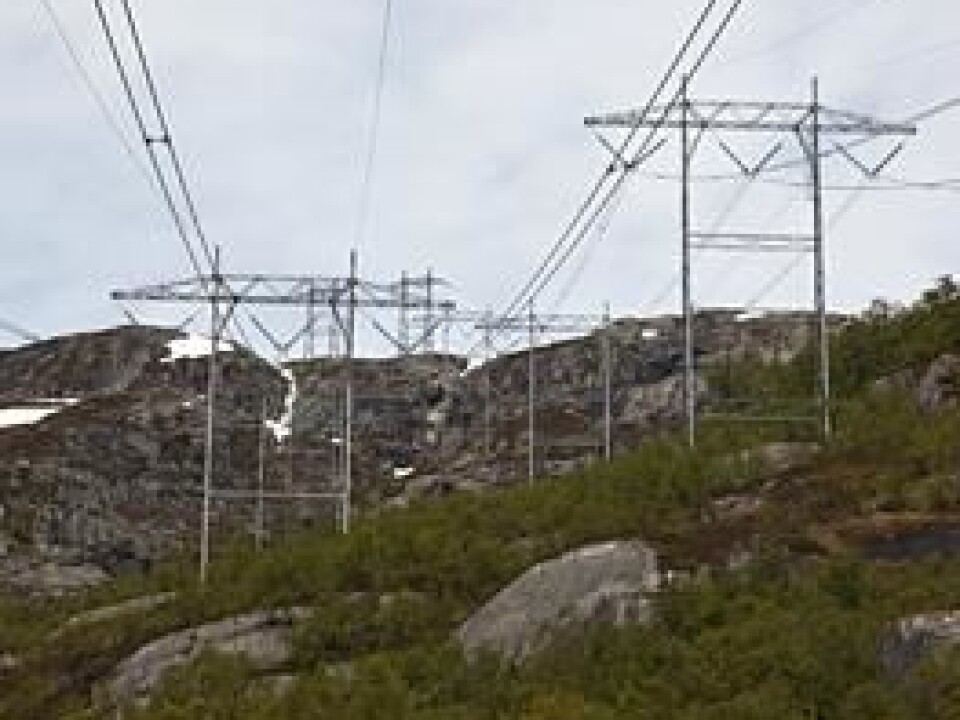An article from University of Oslo

Putting the green back into greenfield management
Fragmented legislation and conflicting interests among different government agencies make Norway's management of greenfield sites piecemeal, not holistic, one legal researcher argues.
Denne artikkelen er over ti år gammel og kan inneholde utdatert informasjon.
Ask Nikolai Winge to summarise his doctoral thesis about land use management, written at the Faculty of Law of the University of Oslo, and his answer is clear: "Today’s legal system does not guarantee a holistic approach to land use management of Norwegian greenfield sites,” he says.
Greenfield lands are water and land areas that have not been affected by development. These areas provide habitat for the majority of the country’s plant and animal diversity and contain the nation's cultural heritage sites. Greenfield sites are also a resource for outdoor recreational use, tourism, agriculture, forestry, hunting, fishing and reindeer husbandry.
At the same time, greenfield land is where new development often takes place, which inevitably gives rise to conflicting interests.
“There are two features of greenfield site development today. The first is that we are building more and more, and the second is that this is happening at the expense of other social and public interests," says Winge.
A scarce resource

Winge's concerns may seem incongruous given Norway's relatively untouched mountains and forests. Only 1.5 per cent of Norway’s land is developed, and the country has the second lowest population density in Europe, with only Iceland’s population density lower. That would seem to be enough land to accommodate all needs.
But it's not that simple, Winge said.
“The conflicts in greenfield land management are often linked to areas under pressure, close to where people live or visit. In large parts of Norway it is also difficult to find areas that are less than a few kilometres away from human disturbance. In step with gradual redistribution of land, greenfield sites in many places have gone from being a shared, multi-purpose asset to a scarce resource," he says.
Fragmented legislation
Winge cites several reports that show Norway's land use management is not following a very sustainable path.

"So the question is: Which policy instruments does legislation provide to ensure that development cases or issues are decided on the basis of comprehensive, holistic assessments?" he says.
Winge says that legislation is fragmented with a complex division of jurisdiction across sectors and between different decision-making levels of government, and that regulations are vague and extremely discretionary.
"This means that our greenfield land is managed by different bodies, each with their own considerations and interests to look after. Decisions made by one body will often affect or intervene in the interests of other bodies. This creates a breeding ground for conflicts over land use management," he says.
“On the whole, we are unable to safeguard those values and considerations emphasised by the Norwegian Parliament as being essential for guaranteeing sustainable land use management,” he adds.
Bit by bit
According to Winge, land use development in Norway can be characterised as bit-by-bit expansion with no foundation in holistic planning. Although a single development initiative alone may not be particularly damaging, the total of a number of initiatives over time can result in unforeseen and undesirable effects.
The challenge is to see the overall effect of all of the small initiatives.
“This is the paradox -- and the background for my thesis. The expansion of small power stations is a good example. The government said at the turn of the millennium that the era of large power plant expansion is now over, and instead we have been concentrating on small plants. But the total impact of the small ones can be just as far-reaching as that of the large ones,” Winge points out.
Around the world several times
Norway has also embraced extensive plans to develop power lines and wind power stations. This initiative presents great potential for conflict with other land use interests in greenfield sites.
“Of the thousands of kilometres of untouched nature that have been lost in the last five years, energy initiatives alone account for around 40 per cent,” the researcher says.
“The national grid in Norway has now been extended by more than 128,500 kilometres of power lines. If you imagine this as one continuous power line, it would go round the earth more than three times."
The fight for land
The increased pressure on greenfield land has led to clear differences of interest in public administration. The situation in Norway today can be characterised as a ‘fight for land’, Winge says.
“The fight generally concerns development cases where administrative bodies attempt to get the most support for their particular interests, rather than decision-making processes where the authorities work together in search of solutions that everyone can agree on. The failure of the law to control land use management contributes to this fight,” he summarises.
Laws become empty phrases
“The question of which interests should be prioritised is still first and foremost a topic for political debate. The legislation gives voice to many good values and considerations, but several provisions are in practice just empty phrases. The principle of sustainable development says no more than what the individual decision-maker finds appropriate in the individual case,” Winge points out.
“Legislators must make a choice and take a position as to what has to be taken into consideration, rather than passing the buck to a sector-specific and level-controlled administrative instrument,” he concludes.
































